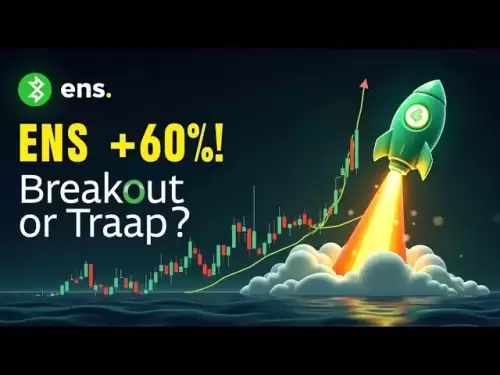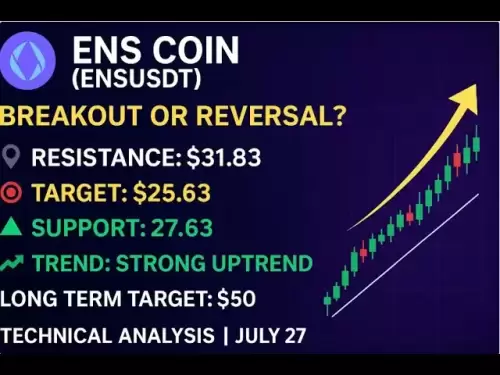-
 Bitcoin
Bitcoin $117900
0.31% -
 Ethereum
Ethereum $3766
0.28% -
 XRP
XRP $3.176
-0.31% -
 Tether USDt
Tether USDt $1.000
0.00% -
 BNB
BNB $795.6
1.51% -
 Solana
Solana $186.8
-1.09% -
 USDC
USDC $0.9999
-0.01% -
 Dogecoin
Dogecoin $0.2353
-1.33% -
 TRON
TRON $0.3226
1.49% -
 Cardano
Cardano $0.8172
-1.08% -
 Sui
Sui $4.178
3.06% -
 Hyperliquid
Hyperliquid $43.05
-3.39% -
 Stellar
Stellar $0.4367
-0.57% -
 Chainlink
Chainlink $18.62
1.47% -
 Hedera
Hedera $0.2828
6.63% -
 Bitcoin Cash
Bitcoin Cash $584.7
5.65% -
 Avalanche
Avalanche $24.81
2.53% -
 Litecoin
Litecoin $112.8
-0.88% -
 UNUS SED LEO
UNUS SED LEO $8.975
-0.08% -
 Shiba Inu
Shiba Inu $0.00001395
-1.07% -
 Toncoin
Toncoin $3.285
-1.05% -
 Ethena USDe
Ethena USDe $1.001
0.01% -
 Polkadot
Polkadot $4.123
0.76% -
 Uniswap
Uniswap $10.49
-0.18% -
 Monero
Monero $326.5
0.14% -
 Dai
Dai $0.9999
-0.02% -
 Bitget Token
Bitget Token $4.576
0.34% -
 Pepe
Pepe $0.00001247
-1.55% -
 Cronos
Cronos $0.1400
3.77% -
 Aave
Aave $295.1
-0.73%
What is DeFi's oracle?
DeFi oracles empower smart contracts by providing crucial real-world data and events, enabling a diverse range of applications within the decentralized finance ecosystem.
Feb 18, 2025 at 07:06 am
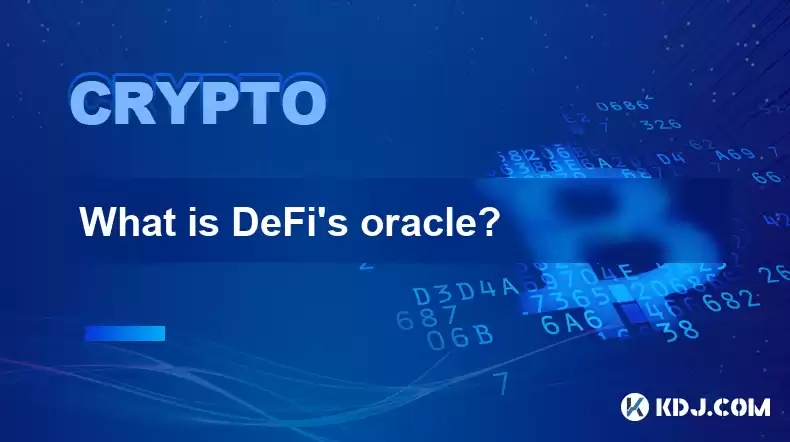
What is DeFi's Oracle?
DeFi oracles are an essential part of the decentralized finance (DeFi) ecosystem, providing smart contracts with access to off-chain data and events. This allows smart contracts to interact with the real world, enabling a wide range of DeFi applications, such as price feeds, lending protocols, and derivatives.
Key Points
- DeFi oracles bridge the gap between smart contracts and the real world, providing them with access to external data and events.
- Oracles are used in a wide range of DeFi applications, including price feeds, lending protocols, and derivatives.
- There are a variety of differentoracle designs, each with its own advantages and disadvantages.
Understanding DeFi Oracles
Oracles are a critical component of DeFi because they allow smart contracts to interact with the real world. Without oracles, smart contracts would be limited to the data and events that occur within their own blockchain, which would severely limit their functionality.
How Oracles Work
Oracles work by receiving requests from smart contracts and fetching the requested data from external sources. This data can include:
- Prices and market data: Oracles can be used to retrieve the prices of cryptocurrencies, stocks, and other financial assets.
- Events: Oracles can be used to monitor events such as sporting events, weather conditions, and news announcements.
- Conditional statements: Oracles can be used to execute conditional statements based on the results of external events.
Types of Oracle Designs
There are a variety of different oracle designs, each with its own advantages and disadvantages. Some of the most common oracle designs include:
- Centralized oracles: Centralized oracles are controlled by a single entity, which is responsible for providing the data and events to smart contracts. Centralized oracles are generally fast and reliable, but they can be vulnerable to censorship and manipulation.
- Decentralized oracles: Decentralized oracles are controlled by a network of participants, which helps to reduce the risk of censorship and manipulation. However, decentralized oracles can be more expensive and less reliable than centralized oracles.
- Hybrid oracles: Hybrid oracles combine the advantages of centralized and decentralized oracles. Hybrid oracles are generally faster and more reliable than decentralized oracles, but they are also more vulnerable to censorship and manipulation.
Use Cases for DeFi Oracles
Oracles are used in a wide range of DeFi applications, including:
- Price feeds: Oracles are used to provide price feeds for cryptocurrencies, stocks, and other financial assets. This data is used by a variety of DeFi applications, such as lending protocols, derivatives, and aggregators.
- Lending protocols: Oracles are used by lending protocols to evaluate the credibility of borrowers and determine interest rates. This data helps to reduce the risk of default and ensure the stability of the lending market.
- Derivatives: Oracles are used by derivatives to create synthetic assets that track the price of real-world assets. This data allows traders to gain exposure to real-world assets without having to hold the underlying asset.
FAQs
What are the risks of using oracles?
The main risks of using oracles are censorship and manipulation. Centralized oracles are vulnerable to censorship, as the entity controlling the oracle can prevent it from providing certain data or events. Decentralized oracles are less vulnerable to censorship, but they can be more expensive and less reliable.
How can I avoid the risks of using oracles?
There are a few things you can do to avoid the risks of using oracles. First, you should always use a reputable oracle provider. Second, you should diversify your oracle providers. Third, you should be aware of the limitations of oracles and use them accordingly.
What are the future trends in oracle development?
The future of oracle development is likely to see the emergence of new oracle designs that are more secure, reliable, and efficient. We are also likely to see a greater use of oracles in DeFi applications, as they become more sophisticated and complex.
Disclaimer:info@kdj.com
The information provided is not trading advice. kdj.com does not assume any responsibility for any investments made based on the information provided in this article. Cryptocurrencies are highly volatile and it is highly recommended that you invest with caution after thorough research!
If you believe that the content used on this website infringes your copyright, please contact us immediately (info@kdj.com) and we will delete it promptly.
- Cryptos to Watch in 2025: Punisher Coin, Chainlink, and the Altcoin Arena
- 2025-07-27 18:30:13
- Bitcoin, Altcoins, Rebound: Navigating the Crypto Comeback Trail
- 2025-07-27 18:30:13
- Ethereum, Bitcoin, and Altcoins: A Shift in Crypto Tides?
- 2025-07-27 19:10:13
- Windtree Therapeutics' Bold BNB Strategy: A $520 Million Crypto Play
- 2025-07-27 19:10:13
- Solana, Staking, and Unilabs: What's the Buzz in the Crypto Space?
- 2025-07-27 16:50:13
- VeChain, HBAR, Remittix: Navigating the Crypto Landscape in 2025
- 2025-07-27 17:10:12
Related knowledge
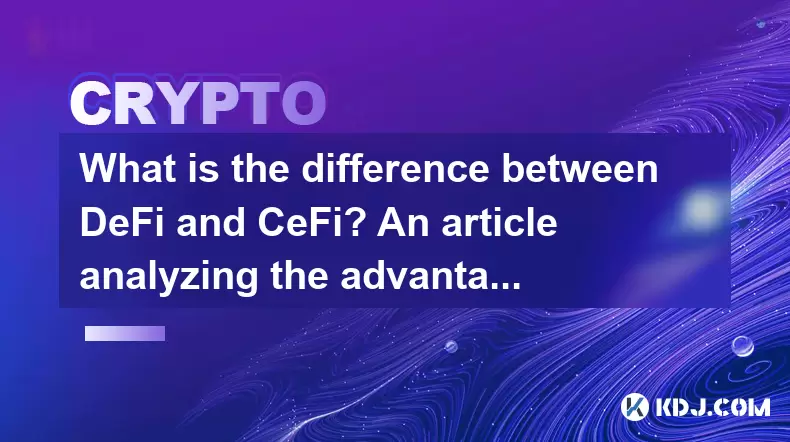
What is the difference between DeFi and CeFi? An article analyzing the advantages and disadvantages of both
Jun 13,2025 at 03:57am
Understanding the Foundations of DeFi and CeFiTo fully grasp the difference between DeFi (Decentralized Finance) and CeFi (Centralized Finance), it’s ...
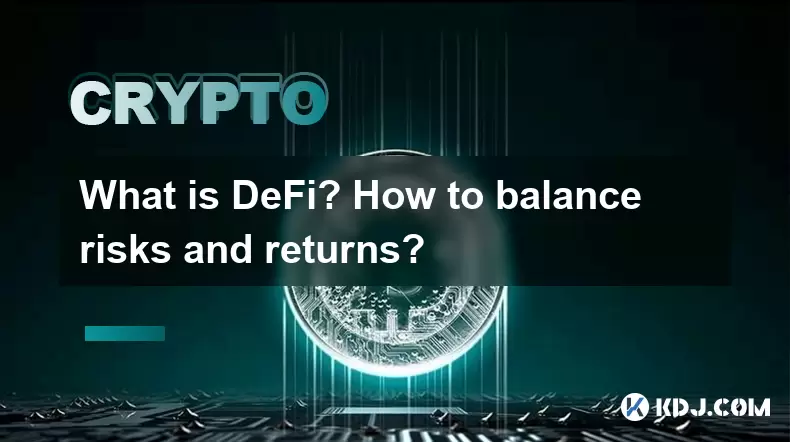
What is DeFi? How to balance risks and returns?
May 31,2025 at 12:22pm
What is DeFi? How to Balance Risks and Returns? Decentralized Finance, commonly known as DeFi, represents a revolutionary shift in the financial ecosy...
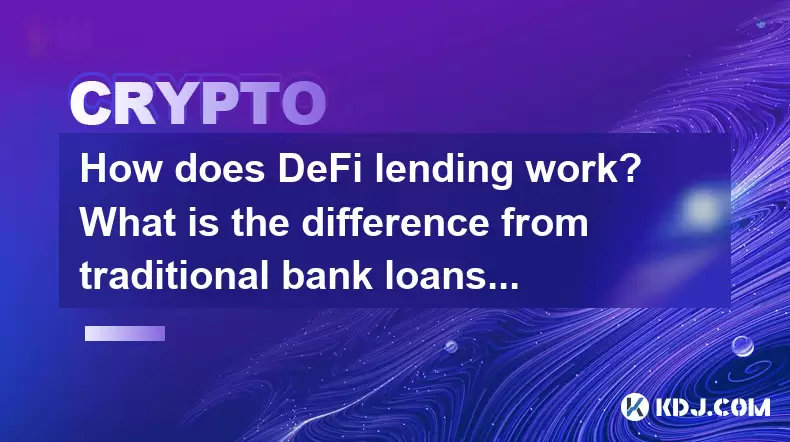
How does DeFi lending work? What is the difference from traditional bank loans?
May 29,2025 at 05:36pm
Introduction to DeFi LendingDeFi lending, or decentralized finance lending, represents a revolutionary shift in the way borrowing and lending are cond...
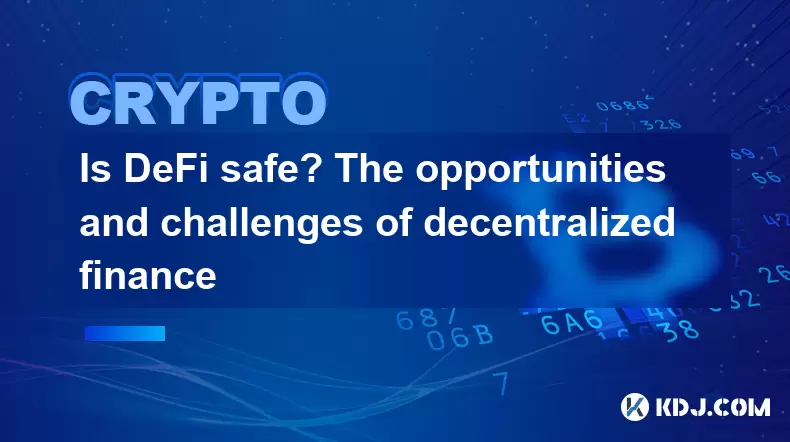
Is DeFi safe? The opportunities and challenges of decentralized finance
May 27,2025 at 02:28pm
Decentralized Finance, commonly known as DeFi, has revolutionized the financial landscape by offering a range of financial services without the need f...
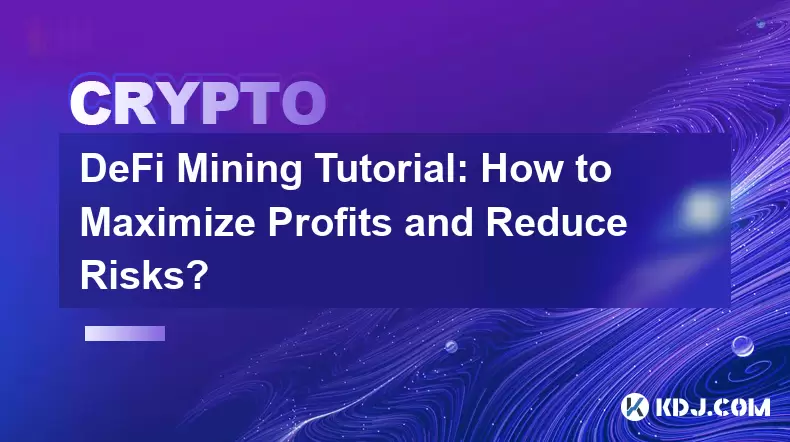
DeFi Mining Tutorial: How to Maximize Profits and Reduce Risks?
May 27,2025 at 07:42am
DeFi, or Decentralized Finance, has opened up a new world of opportunities for crypto enthusiasts looking to maximize their profits through various mi...
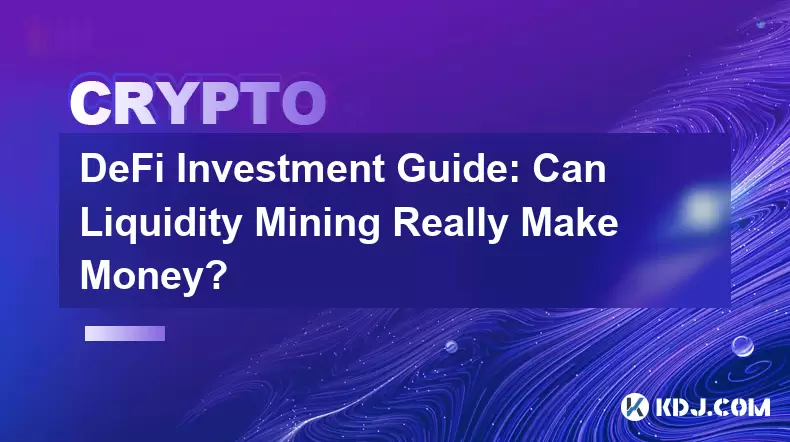
DeFi Investment Guide: Can Liquidity Mining Really Make Money?
May 28,2025 at 10:18am
Introduction to Liquidity Mining in DeFiLiquidity mining has emerged as a popular method for earning passive income within the decentralized finance (...

What is the difference between DeFi and CeFi? An article analyzing the advantages and disadvantages of both
Jun 13,2025 at 03:57am
Understanding the Foundations of DeFi and CeFiTo fully grasp the difference between DeFi (Decentralized Finance) and CeFi (Centralized Finance), it’s ...

What is DeFi? How to balance risks and returns?
May 31,2025 at 12:22pm
What is DeFi? How to Balance Risks and Returns? Decentralized Finance, commonly known as DeFi, represents a revolutionary shift in the financial ecosy...

How does DeFi lending work? What is the difference from traditional bank loans?
May 29,2025 at 05:36pm
Introduction to DeFi LendingDeFi lending, or decentralized finance lending, represents a revolutionary shift in the way borrowing and lending are cond...

Is DeFi safe? The opportunities and challenges of decentralized finance
May 27,2025 at 02:28pm
Decentralized Finance, commonly known as DeFi, has revolutionized the financial landscape by offering a range of financial services without the need f...

DeFi Mining Tutorial: How to Maximize Profits and Reduce Risks?
May 27,2025 at 07:42am
DeFi, or Decentralized Finance, has opened up a new world of opportunities for crypto enthusiasts looking to maximize their profits through various mi...

DeFi Investment Guide: Can Liquidity Mining Really Make Money?
May 28,2025 at 10:18am
Introduction to Liquidity Mining in DeFiLiquidity mining has emerged as a popular method for earning passive income within the decentralized finance (...
See all articles





















